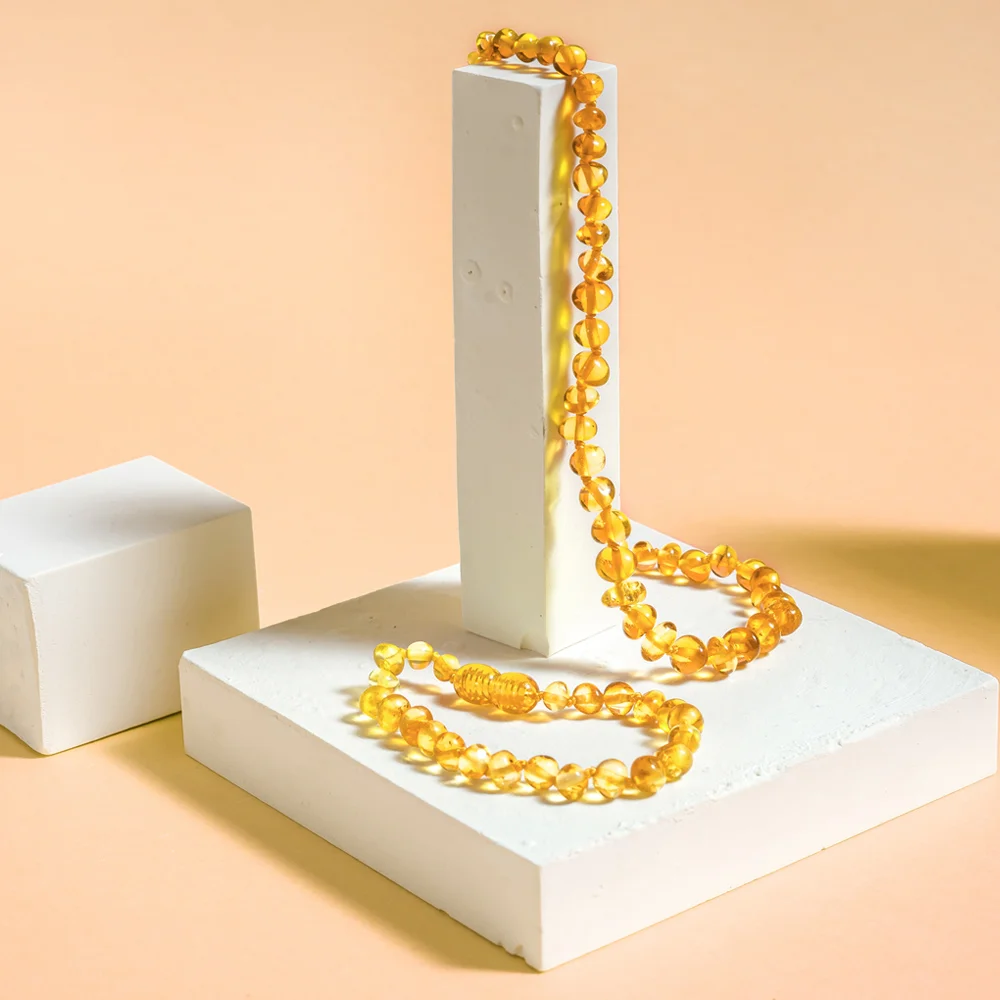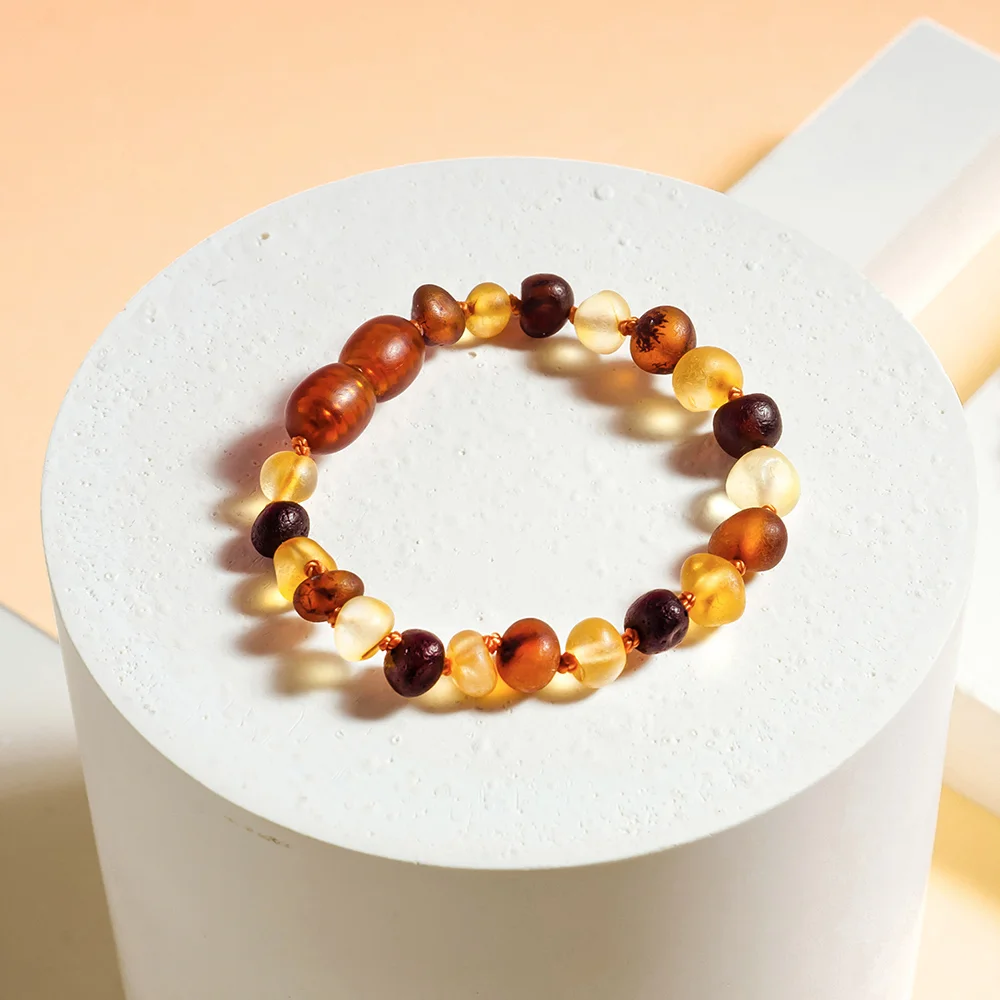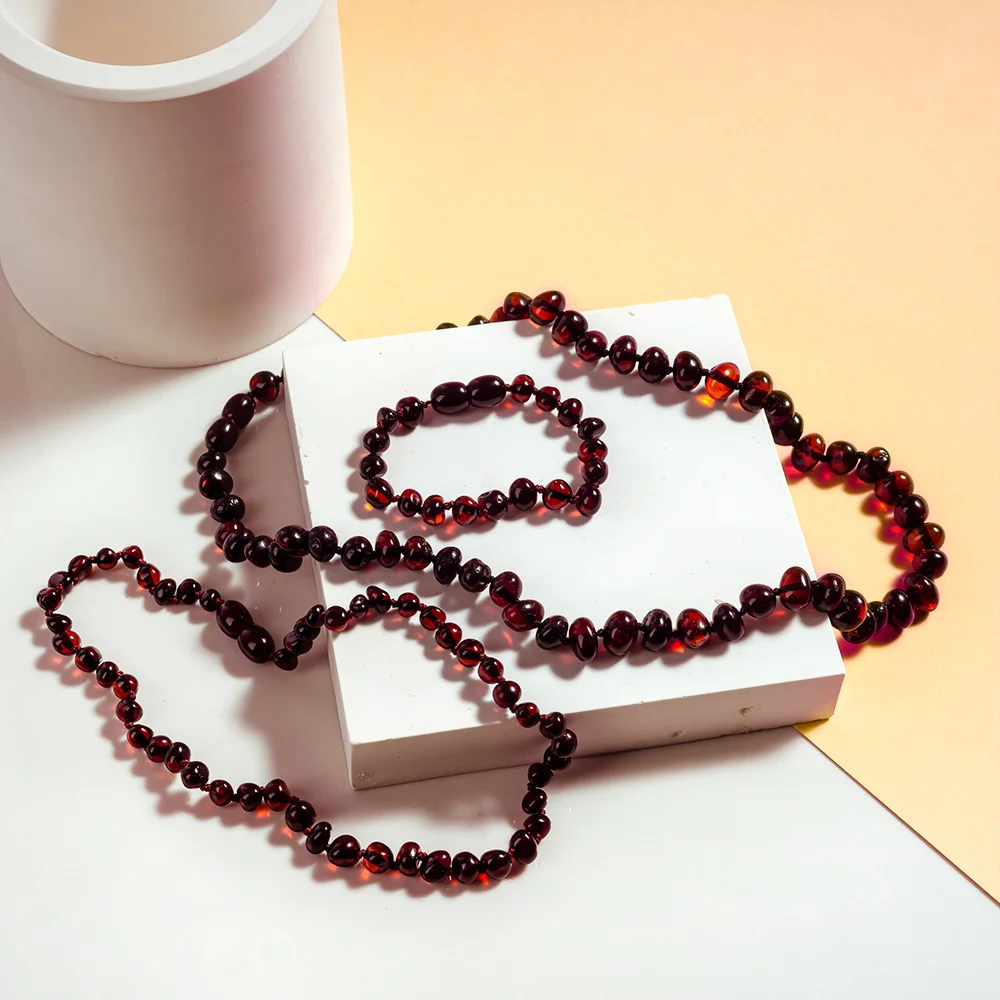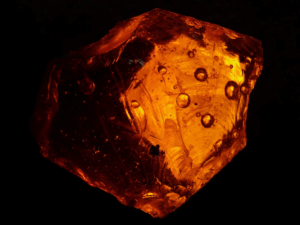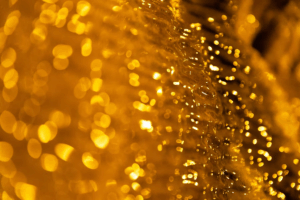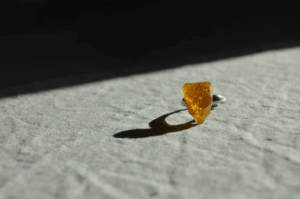Amber has captivated people for thousands of years — not just because of its warm glow, but because it carries the stories of ancient forests frozen in time. Whether you’re shopping for jewelry, inherited a mysterious necklace, or picked up a shiny piece on vacation, knowing how to identify amber has never been more important.
But here’s the tricky part: fake amber is everywhere. As demand rises, so do clever imitations — from glass to plastics, from “copal” to resin blends. So how do you know if what you’re holding is truly millions of years old… or something made last month in a factory?
In this guide, we’re going beyond the usual surface-level tricks. You’ll discover how to tell if amber is real, what it should feel like, what signs to watch out for, and how to use both your senses and science to make sure you’re getting the real thing. By the end, you won’t just be guessing — you’ll know. Let’s begin.
The Feel of Amber: Why Touch Is Your First Clue
Before we dive into UV lights and saltwater bowls, let’s start with something simpler: what does amber feel like? If you’ve ever held genuine Baltic amber, you’ll notice it doesn’t behave like typical gemstones or polished glass. There’s something… softer about it. Not in texture, but in energy. It doesn’t shout — it hums.
Amber feels light. Warmer than you’d expect. Almost like it’s been sitting in the sun, even when it hasn’t. That’s one of the easiest giveaways — glass and plastic tend to be colder to the touch, even after being in your hand for a while.
Now, some ask does real amber feel like plastic? It’s a fair question — after all, both can be lightweight and smooth. But there’s a key difference. Real amber has a certain organic resistance — like touching something between stone and resin. It’s not slick or rubbery. Plastic, on the other hand, often feels hollow, too perfect, and strangely lifeless. It lacks the subtle grip and warmth of true amber.
Here’s another subtle detail people often wonder about: does real amber must have bubbles? The answer is no. While amber can contain tiny bubbles, they’re usually microscopic and randomly scattered — never large or evenly spaced like those in many imitations. In fact, perfectly clear amber with big round bubbles is often a red flag. Real amber’s internal world is complex, filled with plant particles, subtle cloudiness, or natural fractures formed over millions of years.
And here’s something you probably wouldn’t expect: authentic amber isn’t just warm — it’s slightly grippy. Not sticky, but not glass-smooth either. This quality becomes especially noticeable with raw or minimally polished pieces.
So before you reach for a test kit, just hold the piece. Let it rest in your palm. Close your hand. Feel the temperature, the texture, the weight. Let your senses do the talking. Ask yourself: Does this feel alive — or does it feel artificial? It won’t give you the full answer, but it might just give you the first real clue.
The Look of Authenticity: Color, Inclusions, and the Bubble Myth
Amber is visually hypnotic — and that’s exactly what makes fakes so successful. Imitation amber can be beautiful, even convincing. But once you know what to look for, the real stuff sets itself apart.
Let’s talk color first. While many assume amber should be a perfect, honey-like gold, the reality is far more varied. Real amber can range from deep cherry reds to milky whites, mossy greens, even almost black shades. Fakes often aim for the “perfect” golden hue because that’s what sells. Ironically, it’s that perfection that can give them away.
What about clarity? Here’s where it gets interesting. Many people assume real amber must be clear, or that it always contains bubbles. That’s not true. So let’s clear something up:
Does real amber have bubbles?
Not usually — and when it does, they’re tiny and imperfect. Bubbles in fake amber (especially those made with plastic) tend to be larger, rounder, and often spaced in unnatural patterns.
A real piece of amber might contain plant matter, tiny cracks, dust-like textures, or even prehistoric insects — but these inclusions should look random, not staged. If it looks too perfect, it’s a red flag.
On the flip side, don’t be too quick to dismiss a cloudy piece or one with a strange texture. Some of the most beautiful and valuable amber isn’t clear at all. This is especially true with Baltic amber, which often shows a milky or “bone” effect due to microscopic bubbles formed over millions of years.
In other words, knowing what fake amber looks like isn’t about memorizing one image. It’s about training your eye to spot nature’s patterns versus factory patterns. Nature isn’t perfect — and that’s exactly why real amber is.
Testing at Home: Simple Ways to Tell If Amber Is Real
Let’s say you’re holding a beautiful pendant or bracelet. You suspect it might be amber — but you’re not sure. The good news? You don’t need a lab or expensive tools to start checking. There are a few safe, tried-and-true ways to test amber at home.
The first — and often most effective — is the saltwater test. Amber is surprisingly light. In fact, it’s one of the few gemstones that will float in saltwater. Mix about seven teaspoons of salt into a cup of warm water and stir until dissolved. Drop your piece in gently. If it floats, that’s a strong sign you might have genuine amber. If it sinks like a stone, it’s likely glass or another heavier imitation.
Next up is the UV light test. Real amber fluoresces — it glows under ultraviolet light. If you have a UV flashlight or even a nail polish curing lamp, shine it on your amber. A genuine piece should emit a soft, bluish or greenish glow. Fakes might stay dull or show no reaction at all. It’s a simple but surprisingly satisfying test that gives you an instant visual cue.
Another method some people try is the electrostatic test. Rub the amber against a soft cloth or wool and then hold it near tiny bits of paper. Real amber can pick them up due to static electricity. While this won’t work every time (especially on highly polished or treated pieces), it’s another small signal to pay attention to.
And then there’s the smell test — but here’s where we need a little caution. When gently warmed or rubbed, amber can give off a very subtle, pine-like scent. But some try to test this by applying heat with a needle or flame, which can damage or even ruin the piece — not to mention produce toxic fumes from fakes. So if you’re curious about scent, gently rub the piece with your fingers until it warms up. If it’s real, you might get that faint resinous aroma. If it smells plasticky? Not a good sign.
Of course, no single test is perfect. But when multiple tests point in the same direction, you can start feeling confident about what you’re holding. And more importantly — you’ll start learning to trust your own instincts.
When Senses Aren’t Enough: Advanced Testing & Professional Verification
Sometimes, even the most careful observation and home testing can’t give you a clear answer. That’s especially true if the piece has been highly polished, treated, or mixed with other materials — which happens often in commercial jewelry.
This is where science comes in.
Professional amber testing uses tools like FTIR spectroscopy — that’s short for Fourier-transform infrared spectroscopy. It may sound intimidating, but it’s basically a method that analyzes the molecular structure of the material. Genuine amber, especially Baltic amber, has a very distinct chemical fingerprint. Labs and gemologists can use this data to verify authenticity with almost complete certainty.
Another method involves gas chromatography — often used to detect succinic acid, the compound that gives Baltic amber its therapeutic reputation. While many people believe amber must have succinic acid to be “real,” the truth is more nuanced: only certain types (like Baltic amber) contain it in meaningful amounts. Still, for those buying amber for its health or wellness properties, a professional test for succinic acid content may be worth the effort.
Of course, not everyone has access to a lab. But here’s a more accessible solution: certification. If you’re buying amber from a reputable seller, they should be able to provide documentation showing their amber has been professionally tested — either by an independent gemologist or a recognized institution. At Baltic Proud, for example, we provide certificates with our Baltic amber that verify its authenticity, origin, and treatment status.
And if a seller refuses to provide that kind of proof? Walk away. Real amber is precious — and sellers who offer it should be just as transparent as the stone itself.
Real Stories, Real Risks: Why Knowing Matters
Let’s take a step back from the science for a moment.
Imagine a traveler in a busy Baltic market — charmed by a vendor with trays of shimmering amber jewelry. Everything looks stunning. The prices are tempting. She picks out a gorgeous necklace and brings it home, proud of her find. But months later, she reads an article about how to test amber. Out of curiosity, she tries the saltwater test. It sinks. She shines a UV light — nothing. Slowly, she realizes: it’s just colored resin. A pretty fake.
Stories like this happen all the time.
We’ve spoken to customers who inherited “amber” beads passed down through generations — only to discover they were early plastic. Others have bought jewelry online from unknown sellers, thinking they were investing in a piece of natural history, when in reality they received little more than tinted glass.
It’s not just about money. It’s about trust — and emotion. Amber is meaningful. It connects us to nature, to the past, and even to healing traditions. That’s why it’s so important to know how to tell if amber is genuine. When you know, you can feel confident. And when you’re confident, your connection to the piece deepens. It’s no longer just decoration — it’s a story you carry.
Buyer Tips: What to Watch Out For
If you’re shopping for amber, especially online or while traveling, the best thing you can bring with you is awareness. Fakes don’t always look fake — and good deals aren’t always good.
So how to tell if amber is real before buying?
Start by asking questions. A reputable seller should be able to explain where the amber comes from and whether it has been treated or enhanced. Don’t hesitate to ask for certification — especially if the price is high. If a piece looks flawless, identical to others, or suspiciously shiny, be cautious. Real amber is natural; its imperfections are part of its story.
Also, compare multiple items. What does fake amber look like compared to others? Often, once you hold a few different pieces, differences in weight, feel, or even temperature become easier to spot. What does amber feel like in the hand? It shouldn’t feel like cheap plastic — even if some ask, “Does real amber feel like plastic?” the answer is: not quite.
Bottom line? Trust your gut. Then back it up with a test — or better yet, buy from a source that’s already done it for you.
Final Thoughts: Trust Your Senses, Then Trust the Science
Learning how to identify amber is like learning a new language — the more you interact with it, the more fluent you become. First, you notice the feel. Then the look. Then the energy.
But when in doubt, don’t guess. Knowing how to test amber is just the start — getting proof is the peace of mind. If you’re still unsure, let professionals (or certified sellers) do the hard part. You deserve to know your amber is real — not wonder every time you wear it.
After all, this isn’t just about a pretty piece of jewelry. It’s about holding a piece of Earth’s story — and that story deserves to be true.


